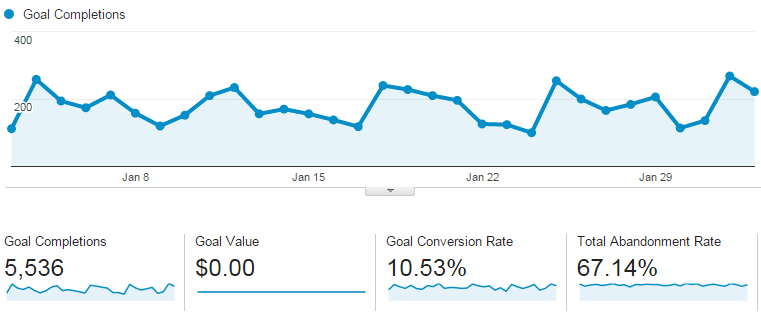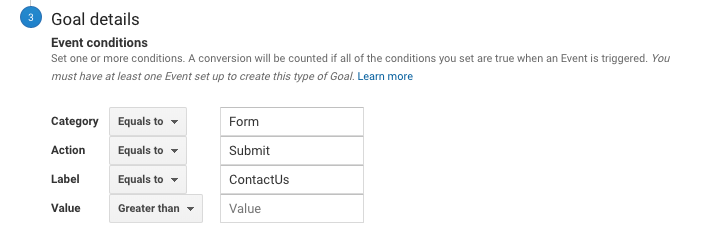Comprehensive Checklist of What Data Is Google Analytics Goals Unable to Track
Comprehensive Checklist of What Data Is Google Analytics Goals Unable to Track
Blog Article
Unveiling the Blind Spots: Comprehending What Google Analytics Goals Can not Determine
In the world of digital analytics, Google Analytics stands as an effective device for tracking and analyzing on the internet customer communications. Understanding what Google Analytics goals can not gauge is crucial for getting a detailed sight of user behavior and interaction.
Individual Habits on External Platforms
Comprehending how users connect on outside platforms is important for optimizing on-line techniques. External systems, such as social networks networks, referral web sites, and online discussion forums, play a significant function in driving traffic to a business's website. By examining customer habits on these systems, businesses can obtain important understandings right into the efficiency of their advertising efforts and the choices of their target market.
One secret facet of user habits on exterior platforms is the recommendation resource. By tracking where the users are originating from, businesses can determine which systems are driving the most traffic to their web site. This details can help firms allocate their resources better, concentrating on the platforms that produce the very best results.

Offline Conversions and Communications
Assessing individual behavior on exterior systems offers valuable understandings into on-line approaches; nevertheless, considering offline conversions and communications is equally important for a comprehensive understanding of a firm's overall efficiency. Offline conversions, such as in-store purchases or phone questions, play a significant duty in numerous organizations' success.

Attribution Beyond Last Click
When diving right into the world of digital advertising analytics, it becomes necessary to look beyond the single touchpoint of the last click for an extra extensive understanding of acknowledgment. While Google Analytics offers important insights right into customer actions, counting only on last-click acknowledgment can be limiting - what data is google analytics goals unable to track. Acknowledgment designs that exceed the last click use a more nuanced sight of the consumer trip, considering all the touchpoints that result in a conversion
Attribution past the last click permits marketers to assign credit to different interactions along click now the conversion path, giving a clearer photo of the effectiveness of various marketing networks. By checking out multi-touch acknowledgment versions such as linear, time decay, or position-based attribution, organizations can better allocate their advertising budget plans and enhance their approaches for maximum effect.
Comprehending the influence of each touchpoint in the conversion procedure is important for making informed choices and maximizing ROI. By welcoming acknowledgment past the last click, businesses can gain deeper understandings right into customer actions and tailor their advertising and marketing efforts more effectively.
Cross-Device and Cross-Browser Tracking

Likewise, cross-browser monitoring enhances important link cross-device tracking by recording user habits as they switch over between different web browsers. Recognizing just how customers engage with internet sites on various internet browsers can assist marketers enhance their online experiences to ensure consistency and capability across various platforms.
Qualitative Information and Customer Intent
Comprehending customer intent via qualitative this page data analysis is critical for establishing targeted electronic advertising and marketing methods that resonate with the needs and preferences of the target market. Qualitative data gives understandings right into the 'why' behind individual actions, losing light on motivations, feelings, and choices that quantitative data alone can not capture. By examining customer comments, comments, and communications, online marketers can discover important information concerning individual intent, permitting them to tailor their messaging, web content, and offerings to much better line up with what their audience is looking for.
Qualitative information also helps in understanding the context in which customers involve with a web site or application. This contextual understanding makes it possible for marketers to produce more pertinent and tailored experiences, eventually driving higher involvement and conversion prices. By delving right into customer intent via qualitative data evaluation, organizations can obtain a much deeper understanding of their target audience, causing much more efficient advertising approaches that fulfill customers' expectations and demands.
Final Thought
In conclusion, Google Analytics objectives have restrictions in determining user actions on external platforms, offline conversions, attribution past last click, cross-browser and cross-device tracking, and qualitative information connected to user intent. what data is google analytics goals unable to track. It is essential for services to be conscious of these blind places in order to supplement their information analysis with other devices and techniques to acquire a much more comprehensive understanding of their audience and boost their overall digital advertising strategies
By examining customer behavior on these systems, businesses can get useful insights into the efficiency of their advertising initiatives and the choices of their target audience.
Assessing user habits on outside systems supplies important understandings right into online approaches; however, considering offline conversions and communications is just as essential for an extensive understanding of a firm's total performance.In digital advertising and marketing analytics, relocating past last-click attribution to explore cross-device and cross-browser tracking is necessary for obtaining a holistic understanding of user interactions across various systems and tools. By examining individual feedback, comments, and communications, online marketers can discover important details concerning individual intent, enabling them to tailor their messaging, content, and offerings to better align with what their target market is seeking.
By diving right into individual intent through qualitative information evaluation, organizations can get a much deeper understanding of their target audience, leading to much more reliable advertising and marketing approaches that fulfill customers' expectations and requirements.
Report this page